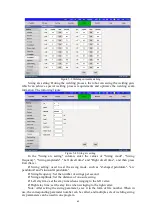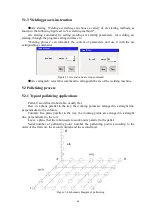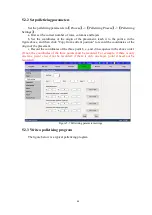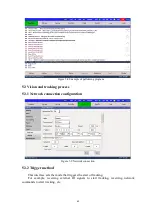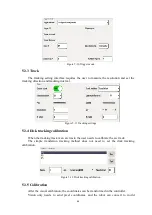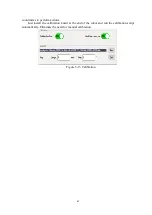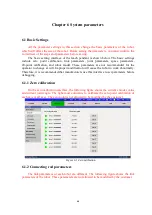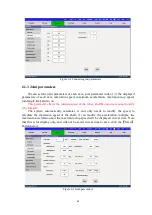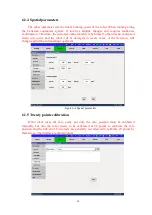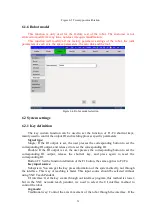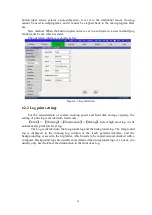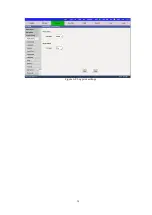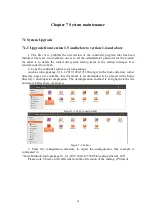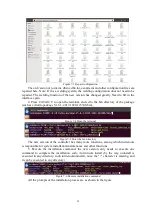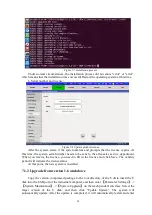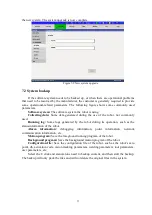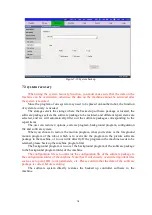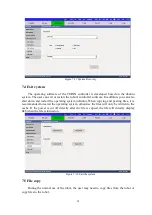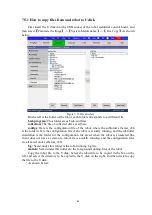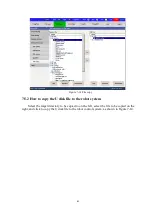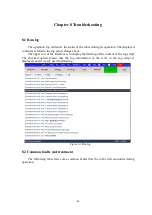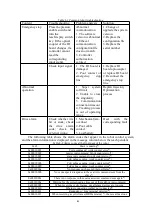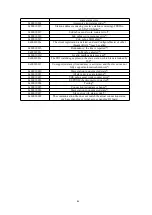
71
Figure 6-5 Twenty-point calibration
6.1.6 Robot model
This function is only used for the factory test of the robot. The customer is not
allowed to modify it at any time, nor does it require modification.
This function will modify all the factory parameter settings of the robot, the joint
parameters of each axis, the space parameters, the zero link and the tool.
Figure 6-6 Robot model selection
6.2 System settings
6.2.1 Key definition
The key custom function can be used to set the function of F1-F4 shortcut keys,
mainly used to control the output IO and welding process specific parameters.
Signal type:
Single: If the IO output is set, the user presses the corresponding button to set the
corresponding IO output, and release it to reset the corresponding IO.
Double: If the IO output is set, the user presses the corresponding button to set the
corresponding IO output, release the shortcut key, and press again to reset the
corresponding IO.
Button F1: Set the function definition of the F1 button, the same applies to F2-F4.
Key input source:
Subsystem: You can get the key press information of the system directly, not through
the interface. This way of teaching is faster. This input source should be selected without
using VNC Teach Pendant.
UI interface: Get the key events through our interface program, this method is slower,
but in the VNC network teach pendant, we need to select the UI interface method to
control the robot.
Jog mode:
Traditional way: Control the axis movement of the robot through the interface. If the
Содержание TKB80306
Страница 1: ...Shanghai Turing Intelligent Manufacturing Robot Co LTD ...
Страница 6: ...IV IV 8 2 Common faults and treatment 82 ...
Страница 52: ...46 Figure 3 49 Sorting files ...
Страница 56: ...50 Figure 4 4 System V variables Figure 4 5 System S variables ...
Страница 79: ...73 Figure 6 8 Log print settings ...






